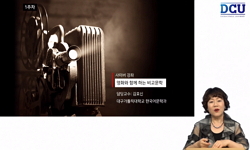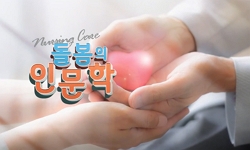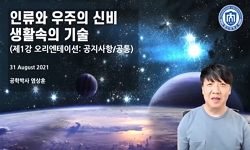The source of《Toshishun》was the Chinese literary romance《Toshishunden》, but it is clear that more than two thirds of the text differs from the original work in terms of its content, and that as its writer Akutagawa said, in the process of adap...
http://chineseinput.net/에서 pinyin(병음)방식으로 중국어를 변환할 수 있습니다.
변환된 중국어를 복사하여 사용하시면 됩니다.
- 中文 을 입력하시려면 zhongwen을 입력하시고 space를누르시면됩니다.
- 北京 을 입력하시려면 beijing을 입력하시고 space를 누르시면 됩니다.
부가정보
다국어 초록 (Multilingual Abstract)
The source of《Toshishun》was the Chinese literary romance《Toshishunden》, but it is clear that more than two thirds of the text differs from the original work in terms of its content, and that as its writer Akutagawa said, in the process of adaptation a new work of children’s fiction was created.
The most significant difference between the two works is that in《Toshishunden》, Toshishun is reborn as a woman, gets married and gives birth but still does not talk. Her husband hits her son with a mortar right in front of her. At that moment she screams “ah!” Then her body returns to its original form of the top of the mountain Yuntaifeng. In Akutagawa’s《Toshishun》, Yama gathers his parents and whips those who have been reborn in the form of horses. Toshishun’s mother stays silent as she considers Toshishun’s inner being. Toshishun, who is moved, cannot help shouting “mother!” And when he becomes conscious, he has returned to Luoyang.
In Akutagawa’s completely modified《Toshishun》, after Toshishun senses his mother’s evanescent love while in hellish pain and shouts “mother”, the key which settles the problem of ‘honest living’ is his realisation that his way of thinking is changing already. In this change of thinking, we cannot fail to notice the writer’s deep understanding of the desire of motherhood. In《Toshishun》, Akutagawa intended to convey the story of the changing personality of Toshishun, who once found it impossible to learn and was anti-social but who changes as a person and decides to engage in ‘honest living with humanity’ and to express a warm heart. In this way the writer depicts humanity with intimacy through the children’s story《Toshishun》. He vividly conveys the warm sentiments of human respect and innocence through Toshishun.
국문 초록 (Abstract)
『두자춘』은 중국의 전기소설 『두자춘전』에서 그 소재를 가져왔지만, 작자 아쿠타가와가 말한 대로 삼분의 이 이상이 원전과 내용을 달리하여, 동화로서 새로운 작품을 만들었다고 하지...
『두자춘』은 중국의 전기소설 『두자춘전』에서 그 소재를 가져왔지만, 작자 아쿠타가와가 말한 대로 삼분의 이 이상이 원전과 내용을 달리하여, 동화로서 새로운 작품을 만들었다고 하지 않을 수 없다.
두 작품의 큰 차이점이란 원전인 『두자춘전』에서는 두자춘이 여자로 환생하여, 시집가서 아이를 낳았지만, 여전히 말을 하지 않자, 그녀의 눈앞에서 남편이 아들을 맷돌에 후려친다. 그 순간, 그녀는 뜻밖에 “앗”하고 비명을 지른다. 그러자 두자춘의 몸은 원래의 운대봉으로 되돌아간다. 이를 아쿠타가와의 『두자춘』에서는 염라대왕이 두자춘 앞에 말 모습이 된 부모를 데려와 채찍질한다. 어머니는 두자춘의 마음을 헤아리고 꾹 참고 견디고 있다. 그 모습에 감동된 두자춘은 소리를 내어 ‘어머니’라고 부르고 만다. 정신이 드니, 두자춘은 원래의 낙양의 거리로 되돌아와 있다.
아쿠타가와가 환골탈태하여 재창작한 『두자춘』에 문제가 없는 것은 아니다. 그러나 이 문제를 푸는 열쇠는 두자춘이 지옥의 고통 속에서 어머니의 무상의 사랑을 접하고 ‘어머니’라고 부른 후에는 ‘정직하게 살’ 생각으로 이미 그의 사고가 바뀌어져 있다는 점이다. 이 사고의 변화에는 모성희구라는 작자의 심층심리가 작용한 것임을 간과할 수 없다. 아쿠타가와가 『두자춘』에서 그리고자 한 것은 인생에 대한 학습 불능자이고 사회도피자인 두자춘이 변하여 ‘인간답게, 정직하게 살’것을 결심하는 따뜻한 인간성을 가진 두자춘으로 바뀌는 인격변화의 이야기이다. 작자는 두자춘에게 밝고 따뜻한 인간 존중의 심정, 순박하고 친근감이 있는 휴머니티를 동화 『두자춘』에서 그리고 있다.
참고문헌 (Reference)
1 山敷和男, "「杜子春」論考" (9) : 1999
2 越智良二, "「杜子春」の陰翳" (29) : 1979
3 高橋龍夫, "「杜子春」の物語性" 45 : 42-, 1999
4 荒木雪葉, "「杜子春」とキリスト教" 九州大学 8 : 24-, 2004
5 宮本顕治, "芥川龍之介研究資料集成 第6巻" 日本図書センター 237-, 1993
6 正宗白鳥, "芥川龍之介研究資料集成 第5巻" 日本図書センター 209-, 1993
7 石割透, "芥川龍之介作品論集成 第5巻" 翰林書房 110-119, 1982
8 渡部芳紀, "芥川龍之介作品論集成 第5巻" 翰林書房 94-, 1999
9 宮坂覚, "芥川龍之介を読む" 笠間書院 35-43, 2003
10 関口安義, "芥川龍之介と児童文学" 久山社 85-, 2000
1 山敷和男, "「杜子春」論考" (9) : 1999
2 越智良二, "「杜子春」の陰翳" (29) : 1979
3 高橋龍夫, "「杜子春」の物語性" 45 : 42-, 1999
4 荒木雪葉, "「杜子春」とキリスト教" 九州大学 8 : 24-, 2004
5 宮本顕治, "芥川龍之介研究資料集成 第6巻" 日本図書センター 237-, 1993
6 正宗白鳥, "芥川龍之介研究資料集成 第5巻" 日本図書センター 209-, 1993
7 石割透, "芥川龍之介作品論集成 第5巻" 翰林書房 110-119, 1982
8 渡部芳紀, "芥川龍之介作品論集成 第5巻" 翰林書房 94-, 1999
9 宮坂覚, "芥川龍之介を読む" 笠間書院 35-43, 2003
10 関口安義, "芥川龍之介と児童文学" 久山社 85-, 2000
11 吉田精一, "芥川龍之介" 新潮社 156-, 1958
12 平岡敏, "芥川龍之介" 大修館書店 311-, 1982
13 中村新一郎, "大正作家論" 構想社 183-184, 1977
14 三好行雄, "三好行雄著作集 第3巻" 314-315, 1993
15 関口安義, "よみがれる芥川龍之介" 日本放送出版協会 199-, 2006
16 "https://terms.naver.com/entry.nhn?docId=1169607&cid=40942&categoryId=31534"
동일학술지(권/호) 다른 논문
-
近代日本語の「-的」の近代韓国語における受容: 「-的」の語構成の原理を中心に
- 고려대학교 글로벌일본연구원
- 김유영
- 2019
- KCI등재
-
- 고려대학교 글로벌일본연구원
- 김성운
- 2019
- KCI등재
-
일본의 안보화와 국가정체성: 물리적 기반과 관념기반을 중심으로
- 고려대학교 글로벌일본연구원
- 이화준
- 2019
- KCI등재
-
오키나와코코로(沖縄の心)의 형성 및 변용과정: 오키나와의 일본 복귀 과정을 중심으로
- 고려대학교 글로벌일본연구원
- 김미영
- 2019
- KCI등재
분석정보
인용정보 인용지수 설명보기
학술지 이력
| 연월일 | 이력구분 | 이력상세 | 등재구분 |
|---|---|---|---|
| 2026 | 평가예정 | 재인증평가 신청대상 (재인증) | |
| 2020-01-01 | 평가 | 등재학술지 유지 (재인증) |  |
| 2017-01-01 | 평가 | 등재학술지 유지 (계속평가) |  |
| 2015-10-20 | 학회명변경 | 한글명 : 일본연구센터 -> 글로벌일본연구원영문명 : Center for Japanese Studies in Korea University -> Global Institute for Japanese Studies |  |
| 2013-01-01 | 평가 | 등재 1차 FAIL (등재유지) |  |
| 2010-01-01 | 평가 | 등재학술지 선정 (등재후보2차) |  |
| 2009-06-01 | 학회명변경 | 한글명 : 일본학연구센터 -> 일본연구센터영문명 : Research Center of Japanese Studies in Korea University -> Center for Japanese Studies in Korea University |  |
| 2009-01-01 | 평가 | 등재후보 1차 PASS (등재후보1차) |  |
| 2007-01-01 | 평가 | 등재후보학술지 선정 (신규평가) |  |
| 2006-04-10 | 학회명변경 | 한글명 : 일본학연구소 -> 일본학연구센터영문명 : Research Center of Japanese Studies, Korea University -> Research Center of Japanese Studies in Korea University |
학술지 인용정보
| 기준연도 | WOS-KCI 통합IF(2년) | KCIF(2년) | KCIF(3년) |
|---|---|---|---|
| 2016 | 0.58 | 0.58 | 0.51 |
| KCIF(4년) | KCIF(5년) | 중심성지수(3년) | 즉시성지수 |
| 0.44 | 0.39 | 0.778 | 0.05 |





 KCI
KCI







